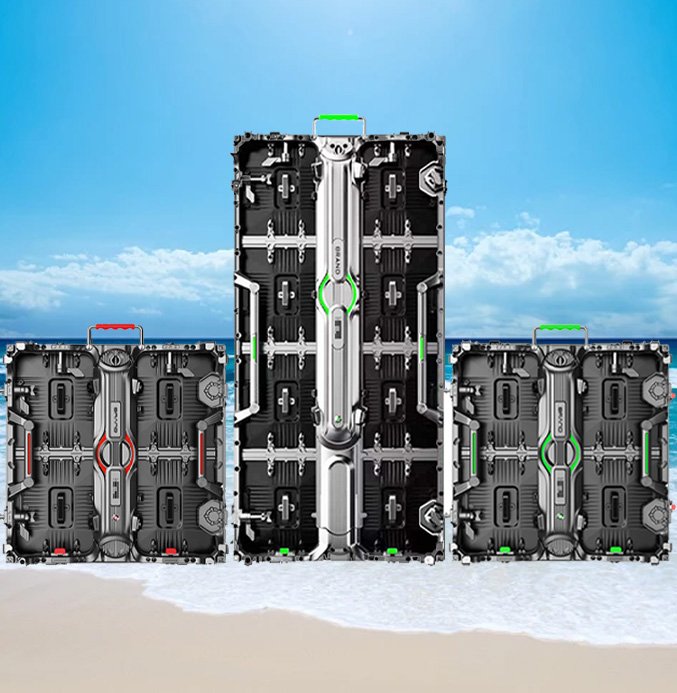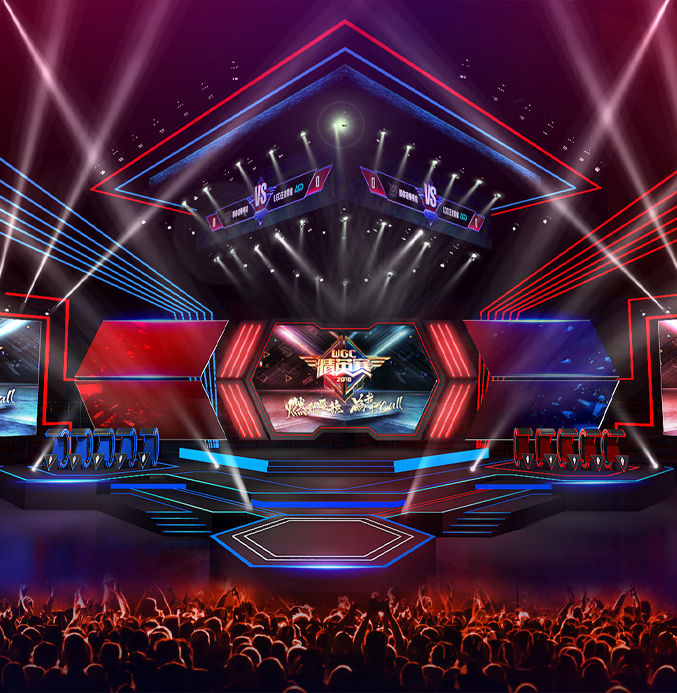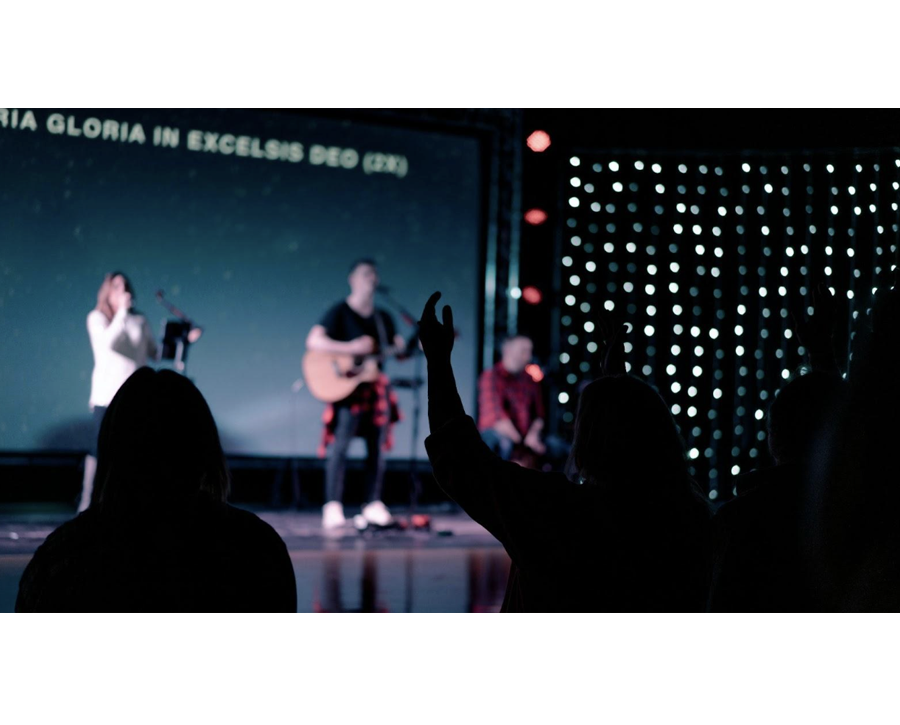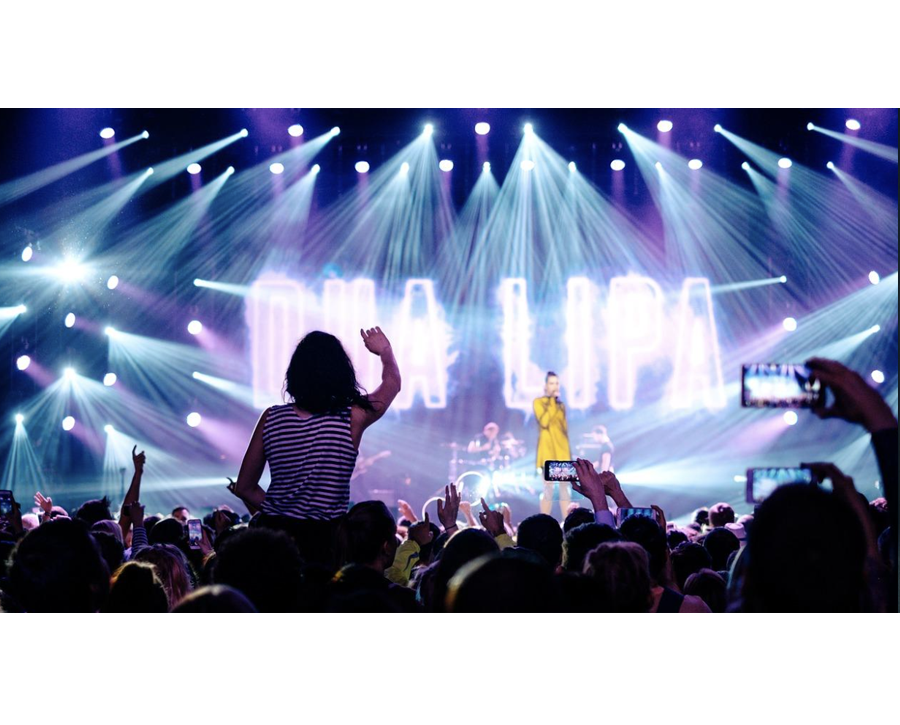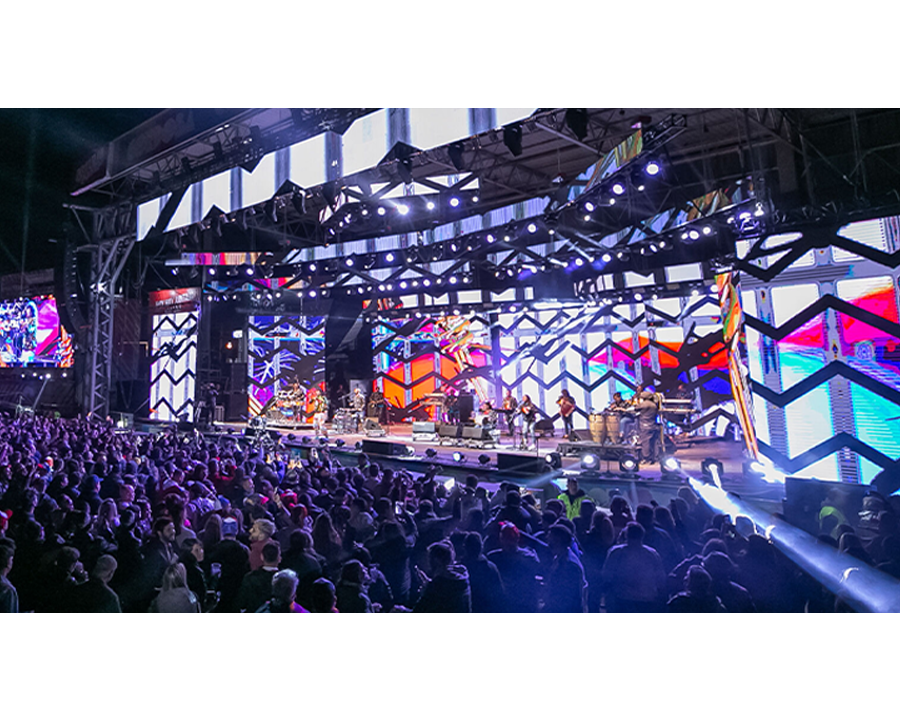
These LED stage screens are important in modern event productions. As they create visuals to impress your audience. If you have concerts or corporate events. Choosing the right LED screen for your stage is everything. This guide will provide all that you want to know in order to make a purchase.
What is a LED Stage Screen?
An LED stage screen is a modern display system manufactured from Light Emitting Diodes. Otherwise known as LEDs. When an electric current passes through these diodes. They start to emit light, thus generating bright and colorful visuals. LED stage screens are incomparable in brightness, color accuracy, and durability. Compared to traditional projection screens or LCD displays when it comes to live events.
How LED Technology Works
LED technology uses tiny semiconductor crystals that help manufacture LED bulbs. Each pixel on the screen has three LEDs: red, green, and blue. Since the brightness of these colors can be moderately changed, the screen is able to generate a large number of colors and in this way they produce clear realistic images.
Purpose of LED Stage Screens
LED stage screens serve several purposes:
- Visual Enhancement: They amplify performances with high-quality images, videos, and animations.
- Information Display: Perfect for presenting text, slides, and other critical information during events.
- Audience Engagement: Their dynamic visuals keep audiences engaged and focused on the content.
- Versatility: From small indoor events to massive outdoor concerts, they adapt to various settings.
Use Cases
LEDs have huge applications in stage screens:
- Concerts: Broadcasting live feeds, visuals, and special effects in front of the audience.
- Corporate Events: Presentations, branding, and interaction-based content.
- Theater Productions: It provides background visuals complementing the performance.
- Sports Events: To keep the scores and replays alive on the screen.
- Outdoor Campaigns: Advertisement and public display of certain shows or events.
Given their modular design, screens of LED lights can be customized for use in any size and shape for a wide application field.
Key Features to Consider When Buying a LED Stage Screen
When it comes to choosing an LED stage screen, there are a few key features that will determine performance and suitability for your event. Here’s a detailed breakdown:
Screen Resolution and Pixel Pitch
- Screen Resolution: The number of total pixels on the screen. The higher resolution translates to sharper and clearer visuals. Something important when events are to be conducted with proximity to the screen.
- Pixel Pitch: It is the distance between the neighbouring LEDs on the screen, most probably specified in millimeters. Smaller pixel pitches, like 2mm–4mm, give much finer images and are suitable for indoor events. Outdoor events may be viewed from a farther distance. So larger pixel pitches are generally used, such as 6mm–10mm.
Brightness and Contrast Ratio
- Brightness: In nits, brightness is that extra feature of the screen that allows the screen to be seen when there is any form of light around. The current LCD screens for outdoors have become designed to have a minimum of 5, 000 nits, while the indoor screens should be in the range of 1, 000-1, 500 nits.
- Contrast Ratio: Enhanced contrast ratio really emphasizes depth and colors making the perceived image even better.
Portability and Ease of Installation
- Easy to assemble and transport due to their modular design.
- Choose lightweight panels with quick-lock systems for ease of installation.
- User-friendly software is available for operating the screen smoothly.
Durability and Weather Resistance
- When outdoor usage is necessary, ensure the screen is waterproof and dustproof, with an IP65 rating or higher.
- Check for resistance against temperature fluctuations and UV protection to prevent damage from prolonged sun exposure.
Viewing Angle
A wider view angle is ideal as it makes every angle in the theatre and in the large audience to get to see the screen. Desired characteristics of horizontal would be higher than 140 degrees, while for vertical ones it should be higher than 120 degrees.
Refresh Rate and Color Accuracy
- Refresh Rate: Higher refresh rates, for instance, 3,840 Hz make flicker rare and give a smoother view, most importantly with the video content.
- Color Accuracy: Find screens with advanced calibration technology that maintain consistent and vibrant colors.
Power Consumption
Energy-efficient LED screens keep operational costs low without sacrificing performance. Look for models with low power consumption or eco-friendly certifications.
Control System and Connectivity
Modern LED stage screens are installed with developed control systems. The features include;
- Connectivity: With the use of options like HDMI, Wi-Fi, technology and Internet.
- Remote Management: The ability to control the screen from a central location or through cloud-based systems.
Types of LED Stage Screens
Indoor vs. Outdoor LED Screens
- For controlled environments.
- Lower brightness and smaller pixel pitches.
- Ideal for conferences, theaters, and trade shows.
Outdoor Screens:
- Constructed to endure weather conditions.
- High brightness and robust in build.
- Suitable for concerts, sports events, and outdoor advertising.
Fixed Installation vs. Rental Screens
Fixed Installation Screens:
- Perfect for permanent setups like auditoriums or stadiums.
- Provide stability and long-term reliability.
Rental Screens:
- Lightweight and portable.
- Quick to assemble and disassemble, ideal for temporary events.
Curved and Flexible LED Screens
- Create an immersive experience by enhancing depth and perspective.
- Commonly used in concerts and exhibitions.
Flexible Screens:
- Can be bent or shaped for creative installations.
- Ideal for atypical sets like cylindrical or wavy displays.
How to Choose the Right Size and Resolution
Select the right size and resolution by considering stage size, audience distance, and event type.
Stage Size
- Match screen size with the stage dimensions.
- A too-large screen will overwhelm a small stage, and a small screen on a large stage is almost ineffective.
Audience Distance
- Close Proximity: Smaller pixel pitches give very detailed visuals, with a high-resolution screen.
- Farther Distance: Screen can have larger pixel pitches without individual pixels being recognized easily.
Event Type
- Corporate Events: Screen will be high resolution in corporate events for clarity during a presentation.
- Concerts: Larger screen formats create impressive visuals captivating to the audience.
- Sports Events: Emphasize brightness and clarity for outdoor viewing.
What is the Cost of LED Stage Screens in 2024?
The price of an LED stage screen is determined by several factors, including but not limited to size, specifications, and installation requirements.
Screen Specifications
- The entry-level models begin from $1,000–$2,000 per square meter.
- High-resolution screens with advanced features reach as high as $4,000–$5,000 per square meter.
Installation Fees
Professional installation also ranges from $500 to $5,000 depending on the extent of difficulty involved and geographic area.
Maintenance Costs
- Routine maintenance of cleaning and re-calibration runs around 300–$1,000 a year.
- Repairing and replacement of broken panels and other components will be extra costs.
Customization and Accessories
- Curved or flexible designs are also more expensive.
- Other costs may be mounting systems, control software, and spare parts.
Installation and Maintenance Tips for LED Stage Screens
Proper installation and maintenance ensure the longevity and best performance of your LED stage screen.
Installation Tips
- Prepare the Site: Ensure that the venue can support the screen’s weight and electrical requirements.
- Manufacturer Guidelines: Put together the panels and connect them as advised.
- Secure Mounting: Fasten it with strong mounts to avoid any accidents.
- Testing Prior to Usage: Check for all connectivity, brightness, and visuals.
Maintenance Tips
- Regular Cleaning: Use non-abrasive clothes, and avoid moisture on the screen.
- Inspect Components: Regularly check cables, connectors, and panels for wear and tear.
- Monitor Temperature: Keep adequate ventilation to avoid overheating.
- Software Updates: Keep control systems updated for better functionality.
- Schedule Professional Servicing: Annual inspections can prevent costly repairs.
Conclusion
Consideration should be taken in a LED stage screen features, types, and costs before investing in it. Knowing your options and with the help of the aforementioned tips. You will choose that perfect screen to make your events unforgettable in 2024 and beyond.
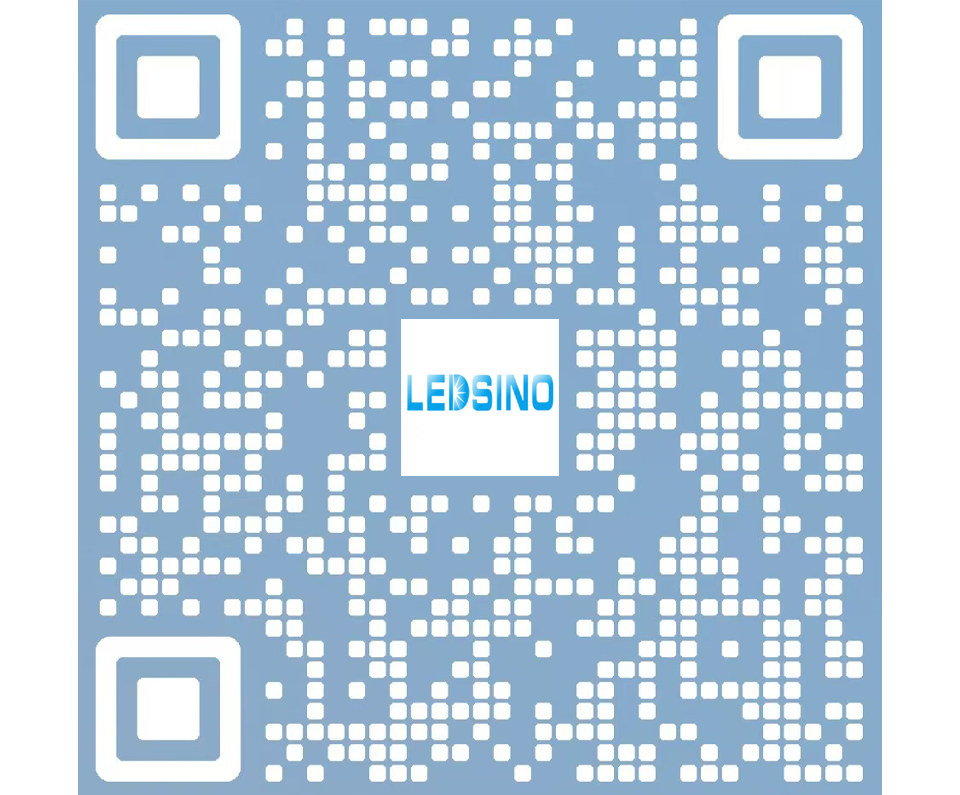
Enter the digital world with our advanced display technologies.

